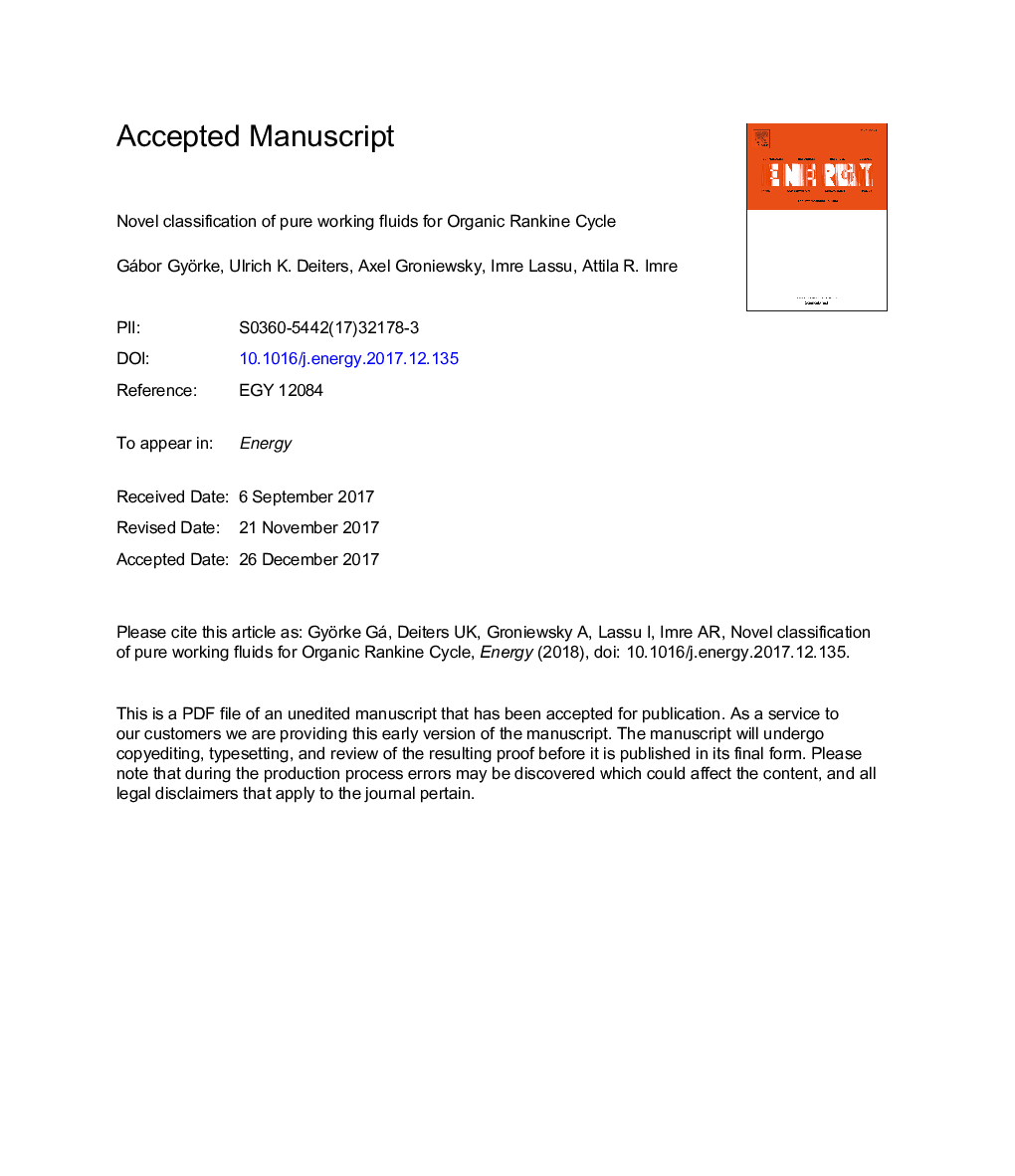| Article ID | Journal | Published Year | Pages | File Type |
|---|---|---|---|---|
| 8072200 | Energy | 2018 | 28 Pages |
Abstract
Power generation from low-temperature heat sources (80-300â¯Â°C) like thermal solar, geothermal, biomass or waste heat has been becoming more and more significant in the last few decades. Organic Rankine Cycle (ORC) uses organic working fluids, obtaining higher thermal efficiency than with water used in traditional Rankine Cycles, because of the physical (thermodynamic) properties of these fluids. The traditional classification of pure (one-component) working fluids is based on the quality of the expanded vapour after an isentropic (adiabatic and reversible) expansion from saturated vapour state, and distinguishes merely three categories: wet, dry and isentropic working fluids. The purpose of this paper is to show the deficiencies of this traditional classification and to introduce novel categorisation mostly to help in finding the thermodynamically optimal working fluid for a given heat source.
Keywords
Related Topics
Physical Sciences and Engineering
Energy
Energy (General)
Authors
Gábor Györke, Ulrich K. Deiters, Axel Groniewsky, Imre Lassu, Attila R. Imre,
